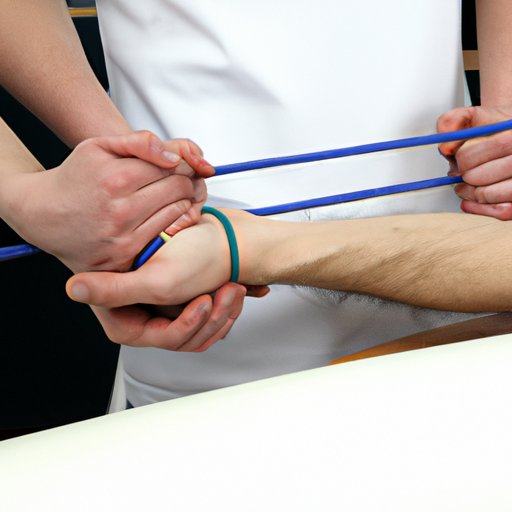
Introduction
Physical therapy sessions are crucial to the overall well-being of an individual. They provide learning, healing, and relief to those facing a wide range of physical issues. Knowing how long a physical therapy session is can help individuals plan their schedules better and manage their expectations. This article aims to provide a comprehensive beginner’s guide to understanding physical therapy sessions; the duration, frequency, the optimal length, what it entails, factors that influence its length, and the importance of keeping to scheduled time.
A Beginner’s Guide to Understanding Physical Therapy Sessions: Duration and Frequency
Defining physical therapy sessions
Physical therapy is the process of diagnosing, treating, and managing conditions that limit body movements. Physical therapy sessions involve therapy exercises or manual therapy and the application of specialized equipment to improve physical functionalities. A physical therapist is responsible for administering a customized treatment plan to the patient based on their condition and goals.
Typical duration of a physical therapy session
A standard physical therapy session lasts between 30 to 60 minutes. Depending on the patient’s condition, their age, and fitness level, the session may last longer. Patients with chronic conditions may require longer and more frequent sessions for effective treatment.
Frequency of physical therapy sessions
The frequency of physical therapy sessions depends on the patient’s health condition and personal goals. A physical therapist may recommend that patients attend therapy sessions two to three times per week for a specific period. The treatment period may range from a few weeks up to several months and may vary based on the individual’s goals and the severity of their condition.
The Importance of Staying on Time: A Look Into Physical Therapy Session Duration
Time management in physical therapy
In physical therapy, time management is critical. Most physical therapy clinics manage a schedule, and it’s crucial for patients to show up on time. Arrival time helps maintain schedules and optimize the amount of time spent on each patient’s therapy.
Consequences of session overruns
Session overruns can affect the clinic’s schedule, causing a ripple effect on the therapist’s schedule, leading to delays and longer wait times for other patients. It’s important to manage time effectively to provide effective care and respect the time of other patients.
Benefits of keeping to scheduled time
Staying on schedule can lead to productive therapy, reducing the frequency of the sessions needed and amount of total time spent in therapy. On-time sessions can boost patient adherence and increase motivation to continue the treatment plan, resulting in better outcomes.
How Long is Long Enough? Discussing the Optimal Length of a Physical Therapy Session
Factors to consider in determining session length
Several factors determine the optimal length of a physical therapy session, including the patient’s condition, goals, and treatment planning. Other considerations include the therapist’s assessment, the equipment required, and the patient’s physical endurance.
Three factors that could indicate optimal session length
First, the patient’s response to the treatment is a crucial factor in determining the optimal length of a therapy session. Second, the type of therapy being administered determines how long a session should last. Lastly, the patient’s level of fatigue, physical endurance, and attention span may influence the session’s length.
Drawbacks of a session that is too short or too long
A session that is too short could result in insufficient time to administer treatment effectively. A session that is too long could lead to exhaustion, fatigue, and decreased attentiveness, causing the patient’s response to treatment to decrease.
From Stretching to Strengthening: What a Physical Therapy Session Entails and How Long it Lasts
Stages in a physical therapy session
A typical physical therapy session involves a range of activities. The session typically proceeds as follows:
- Stretching and warm-up exercises
- Strengthening exercises and resistance training
- Massage or manual therapy if needed
- Application of specialized therapy equipment
- Evaluation and modification of the treatment plan
Time allotted to each stage
Each stage’s time allocation varies, with the assessment of the patient’s condition determining the treatment program’s focus and the time allocated to each stage.
The range of activities involved in a typical therapy session
Therapy sessions may involve activities such as balance and coordination training, range of motion exercises, gait training, and pain management techniques. Common equipment may include weights, resistance bands, foam rollers, and balance balls.
Time is of the Essence: Factors that Influence the Length of a Physical Therapy Session
Patient’s condition
The patient’s condition is a critical factor in determining the optimal length of a physical therapy session. Conditions that require longer therapeutic interventions may require extended sessions to address specific treatment requirements.
Type of therapy
Different therapies require varying amounts of time to administer, and their therapeutic benefits may influence the duration and frequency of treatment plans.
Therapist’s approach
A physical therapist’s approach to treatment varies depending on their training and expertise, and this could influence the length of a physical therapy session. An experienced therapist may have a more efficient therapeutic approach compared to a less experienced one, allowing for quicker and successful interventions.
Conclusion
Recap on key points
Physical therapy sessions offer a range of benefits, from learning, healing, and relief to those in need. They typically run for between 30 and 60 minutes and may continue for several months based on the patient’s condition and goals. It’s crucial to respect the clinic’s schedule, maintain session schedules, and optimize time effectively.
Benefits of physical therapy and importance of staying on schedule
Physical therapy assists individuals in remaining mobile and functional, whether they have suffered an injury, undergone surgery, or have a chronic health condition. Attending sessions consistently and staying on schedule provides an effective approach and helps reduce the frequency of interventions.
Encouragement for readers experiencing any challenges during therapy
Physical therapy may be challenging, but it’s important to persevere and keep pushing forward. Communicating with the therapist and attending all recommended sessions increases the likelihood of successful interventions and a productive outcome.





